Summer is, in my opinion, the best season of all. I make the most of it by spending time at the beach, going for long walks and drinking up the Vitamin D from the sun. However, long summer days in my youth, when old age was too far off, has left evidence of sun damage. In the last 2 years, I have discovered that those rays were not as kind and loving as I once thought. So I have some age spots, flaky bits, wrinkles and crinkles. But there is a solution to treat sun damaged skin and prevent further damage. These 4 steps to recover sun damaged skin are easy to follow and still allow you to enjoy the benefits of the summer season.
1. Exfoliate!
To get rid of flaky dry patches, a dull complexion and sun damage, then make exfoliation your friend. Exfoliate at least once or twice a week to:
- Remove dead skin cells
- Remove rough and dry patches
- Stimulate cell renewal
- Make your skin glow!
Body scrubs are easy to make with natural ingredients such as coconut oil, sugar, ground coffee and shea butter to name a few. Check out my body scrubs here.
Ingredients to include in your body scrub:
Stable oil or butter – coconut, shea, cocoa
The fatty acids in these oils provide excellent moisture and conditioning for the skin. The exfoliation process stimulates the skin cells, removes the dead skin and allows the oils to penetrate deeply into the layers of the epidermis. This process allows the sun damaged skin to become soft and hydrated again and gives the skin a smooth and silky appearance and touch.
Coconut oil provides antibacterial, antiviral and antifungal properties. These help with any skin condition such as eczema or dermatitis.
Carrier oil – almond, avocado, olive, apricot, jojoba, rosehip or macadamia
These oils provide antioxidants, especially good for ageing skin and sun damaged skin. See more on the power of antioxidants in Step 3.
Sugar and Salt
You can use either salt or sugar as they both make excellent abrasives. The biggest difference between salt and sugar is the edges of the granules. Salt is sharper and more jagged, making it a strong abrasive which is good for dry and calloused skin. Perfect for heels, elbows, knees. Most salt scrubs use a natural sea salt (Himalayan, Mediterranean). Sea salts are high in trace minerals such as calcium, magnesium, potassium, copper and iron. These minerals help with circulation, reduce inflammation, detoxification and a muscle relaxant. Sea salt also has antibacterial and antiviral properties, making it a great healing ingredient for skin disorders such as eczema and psoriasis. Salt scrubs can be a little drying, so it’s a good idea to use them only once a week. Do not use salt on cuts or open wounds. Salt scrubs don’t have the stickiness that sugar has, making them a little harder to use.
Sugar granules are both small and round, in comparison with salt, making sugar a more gentle abrasive than salt. It melts faster in hot water so washes off well. Sugar is also not as drying as salt, meaning you can use it a little more liberally. Sugar contains glycolic acid, which helps protect skin against harmful toxins and is a natural conditioner and moisturiser. Sugar has the advantage of coming in coarse, medium and fine granules.
Ground Coffee
Your leftover ground coffee from your morning cuppa may come into good use as a plant fertiliser, but ground coffee also makes a great ingredient for a body scrub. Coffee granules are both small and soft, which combined with sugar, make the perfect scrub. Coffee can reduce inflammation and swelling, giving your skin the appearance of firmer looking skin.
Essential Oils
Essential oils provide great antibacterial, antifungal and antiviral properties. They also provide healing benefits for many skin disorders and sun damaged skin. Lavender, tea tree and lemon are great additions to your weekly body scrub.
2. Protect with SPF
The sun is essential for our health and our skin. We absorb Vitamin D by having our skin exposed to the sunlight. Spending just 10 minutes in the sun can give you 24 hours of Vitamin D. A darker complexion can afford 30 minutes. If you are going to spend more than 30 minutes in the sun, it’s wise to use some measure of protection. And for all those “fair beauties” the result of 10 minutes in the sun with exposed skin can mean disaster. My DD “cooks like an egg on a hot tarmac”. Finding a sunscreen that I was happy to put on my skin (a reasonable SPF and no chemicals) and my families took awhile. I tested many. My solution was this Homemade Coconut Oil Sunscreen that works a treat. We tested it out in Queensland recently, and with great delight, it works. The best thing about this sunscreen is that it has the added protection layer of shea butter and coconut oil. Perfect for any type of skin and essential for sun damaged skin. It glides on easily and rubs in without the pasty white colour of commercial zinc sunscreens and leaves your skin moisturised. Your skin doesn’t have that tight feeling after being in the sun or salt water. My whole family tested this and found that the sunscreen lasted an hour maximum before needing reapplication. Depending on how much time you spend in the water and the time of day you may need to reapply more frequently.
3. Strengthen with Antioxidants
Vitamins A, C and E are all antioxidants and are great for treating sun damaged skin. Antioxidants help repair skin damage by strengthening and hydrating. Over exposure to the sun causes oxidative damage to the skin’s cells. Free radicals increase, and premature ageing begins. Antioxidants can help repair the damage and slow down the ageing process. Using oils that are high in antioxidants topically on your skin as well as taking either supplements will serve you well. A diet high in antioxidants will also help the process of reversing skin damage.
Carrier Oils – Packed with Antioxidants
Sweet Almond – Rich in Vitamin E, highly nourishing and cell renewing.
Argan – rich in vitamin A, increases cellular regeneration
Avocado – includes chlorophyll, lecithin and potassium, as well as vitamins A, D and E. Avocado oil has a significant amount of palmitoleic acid, a fatty acid that provides moisture to the lower layers which make it ideal for a mature or damaged skin.
Coconut oil – The King of fatty acids and antioxidants! Coconut oil is great for moisturising and nourishing of skin. Buy your coconut oil here.
Rosehip – Natural form of Vitamin A
Sesame Oil – Provides rich concentrations of vitamins E and B-complex, as well as calcium, magnesium, phosphorus, protein and lecithin. The only negative is that you will smell like an Asian restaurant!
Tamanu – extracted from the nuts of the Ati tree. Natural antioxidant and anti-inflammatory, as well as anti-bacterial. Apparently one of the best skin healing and rejuvenating oils available.
Wheatgerm – High in vitamin E and a natural antioxidant.
Essential Oils – Antioxidants and Healing Properties
Essential oils are just that – essential. For the perfect anti ageing oil/serum then try this combination. Lavender, Frankincense and Pomegranate Seed Oil.
Here’s what to do:
Use a dark coloured 2 ounce glass bottle, preferably with a glass dropper insert.
Add 10-20 drops of each essential oil.
Add in 2 capsules of Vitamin E oil.
Fill the last part of the bottle with jojoba oil.
Gently roll bottle to mix.
Use a 1/2 of the dropper and massage into your face and neck both morning and night. Also perfect for age spots on hands or legs.
This is my favourite combo but you could swap essential oils to geranium, rose or chamomile and use a different carrier oil such as avocado or apricot.
Eat Right – Foods high in Antioxidants
Cherries, Blueberries, Goji Berries and Dark Chocolate all have something in common. They are all high in antioxidants. Cherries contain melatonin which protects skin against ultraviolet radiation. They are also packed with Vitamin C which is essential for building collagen and preventing wrinkles. Check out the following list for more foods high in antioxidants. Consume all or some of these a few times a day and you will be well on your way to a radiant and dewy complexion.
- Broccoli
- Pomegranates
- Elderberries
- Kidney beans
- Blackberries
- Artichokes
- Pecans
- Strawberries
- Cilantro (coriander)
- Carrots
- Sweet potato
- Grapes or red wine
- Squash
- Pumpkin seeds
- Wild caught salmon or mackerel
Sunburn Treatment
There are many sunburn treatments available but my recommendation is one you can easily mix up at home with ingredients that you might already have. I found this recipe on Draxe.com
What you need:
- 1/2 cup Aloe Vera juice
- 1/8 cup Coconut oil – fractionated (so the oil won’t set hard)
- 10 drops Peppermint essential oil
- 10 drops Lavender essential oil
- A glass spray bottle
- A glass jug or jar
What to do:
- Heat a small amount of water in a saucepan over gentle heat.
- Place the Aloe Vera juice and coconut oil in the jug and place in the saucepan of water.
- Heat the mixture until ingredients have melted together.
- Remove from heat and add the essential oils.
- Let the mixture cool and then pour into glass spray bottle.
- Store in a cool place.
If you get caught out with sunburn and don’t have time to mix the above then grab some aloe vera gel, coconut oil and essential oils. Mix in a jar to make a paste and then smear this over the burn area.
Summary
4 steps to repairing and future protection for sun damaged skin
- Exfoliate – use a homemade or purchased sugar/oil scrub
- Protection – use a zinc based sunscreen or better still make this DIY one.
- Strengthen – use oils that are rich in antioxidants that feed and nourish the skin. Ditch all those commercial bought creams and lotions that only create toxicity which leads to more damaged skin cells.
- Eat Right – consume 3-4 servings of the foods that are high in antioxidants. Also, foods that are high in Vitamin C and fatty acids.
- Coconut oil contains high amounts of fatty acids, mainly MCFAs (Medium Chain Fatty Acids). These fatty acids protect, nourish and heal the skin and our cellular health. Use coconut oil in replace of your normal moisturiser and consume it regularly. A maintenance dose of 3 tablespoons a day with food is all that’s needed.
Sources: Some of this information first appeared in The Good Health News
Enjoyed this article? Do you need more DiY’s or Natural Remedies?
Check out my book Natural Remedies for Chronic Illness 



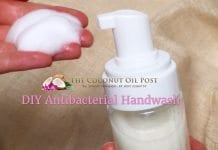


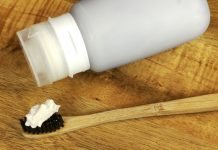



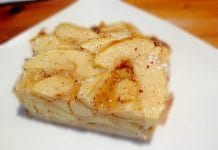



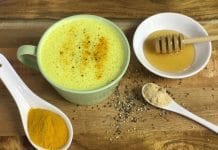
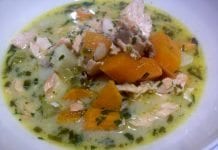
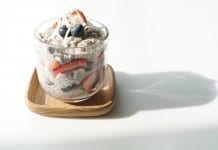


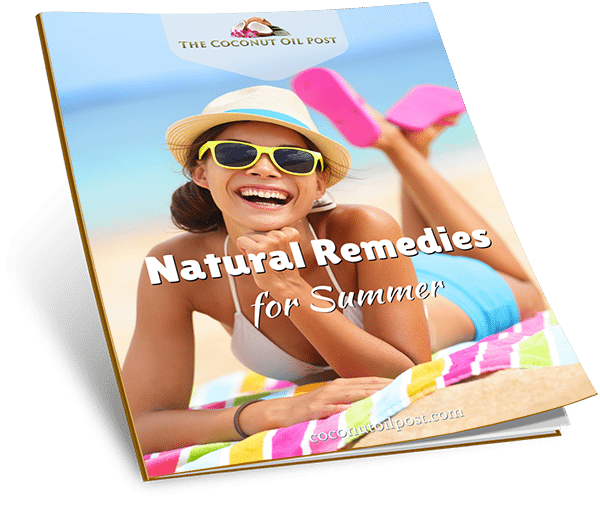









Thanks for sharing some tips and products that can help. I love summer, it’s the time I always go to the beach! Stay awesome!
Thank you for sharing this on how to recover sun damaged skin. I really do love going to the beach and I thought that putting sunblock is enough. Now, I know I have to exfoliate and strengthen using oils as well. Great read!